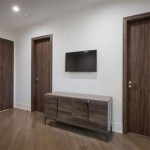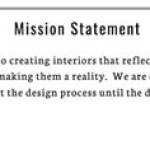Book Interior Design: Crafting a Captivating Reading Experience
Book interior design, often overlooked in the publishing process, plays a pivotal role in shaping the reader's experience. It encompasses the visual elements within a book that contribute to its readability, aesthetics, and overall engagement. From typography and layout to page numbering and formatting, every detail meticulously considered in book interior design has the potential to enhance or hinder the enjoyment of the written word.
Typography: The Foundation of Readability
Typography forms the cornerstone of book interior design, dictating the visual appearance and readability of the text. The choice of typeface, font size, line spacing, and letter spacing significantly impacts the reader's comfort and comprehension. Serif fonts, characterized by small decorative strokes at the ends of letters, are commonly used for body text, enhancing readability by providing visual cues for eye movement. Sans serif fonts, lacking these strokes, are often employed for headings and titles, offering a cleaner and more modern aesthetic.
Font size is crucial for ensuring comfortable reading. A balance must be struck between legibility and the overall page count. Larger fonts enhance accessibility but can lead to bulky books. Conversely, smaller fonts may strain the eyes, particularly for extended reading sessions. Line spacing, or leading, is essential for creating visual separation between lines and preventing eye strain. Sufficient leading provides adequate white space, improving readability and allowing the reader's eye to rest between lines. Letter spacing, or kerning, refers to the adjustments in the spaces between letters, particularly important for aligning letters in pairs or groups to achieve a visually pleasing and balanced appearance.
Layout and Page Design: Navigating the Story
The layout and page design of a book provide structure and navigational cues for the reader, guiding them through the flow of the story. Page margins, the blank spaces around the text, offer a visual buffer, enhancing readability and creating a sense of spaciousness. Page numbers, often placed at the bottom corners of pages, provide easy reference and navigation. Chapter headings, designed to stand out visually, act as signposts, indicating the progression of the narrative.
The use of white space is paramount in book interior design, providing visual breaks and enhancing readability. Balanced distribution of text and white space helps create a visually appealing and inviting reading experience. Page breaks should strategically placed to avoid interrupting the flow of the text and enhance the reader's engagement. Additionally, the inclusion of visual elements such as illustrations, photographs, or charts can enhance the reading experience, adding visual interest and supplementing the narrative.
Color Palette and Visual Hierarchy: Setting the Tone
Color plays a significant role in book interior design, influencing the overall mood and aesthetics of the book. A carefully chosen color palette can complement the genre, theme, and tone of the story, creating a cohesive and immersive reading experience. For example, a novel set in a bustling city might employ a vibrant color palette, while a historical drama might feature a more muted and classic approach.
Visual hierarchy is crucial for guiding the reader's attention and ensuring a clear understanding of the text. Header sizes, font weights, and color contrasts can effectively highlight key elements such as chapter titles, section headings, and important keywords. This hierarchy ensures that the reader's attention is drawn to the most significant information, facilitating comprehension and engagement.
In conclusion, book interior design is an intricate process that involves a deep understanding of typography, layout, color, and visual hierarchy. By carefully considering these elements, publishers can create aesthetically pleasing and highly functional books that enhance the reading experience and leave a lasting impression on readers.

Interior Book Design Guide To Formatting And Layout Miblart

Interior Book Design Formatting Luminare Press

Interior Book Design Guide To Formatting And Layout Miblart

Interior Book Design Guide To Formatting And Layout Miblart

Book Interior Layout Design Julie Karen Juliekaren Com

Interior Book Design Guide To Formatting And Layout Miblart

Interior Book Design Formatting Luminare Press

Book Interior Design Designs Themes Templates And Able Graphic Elements On Dribbble

Book Design 2 Maja Creative

Book Design 2 Maja Creative








